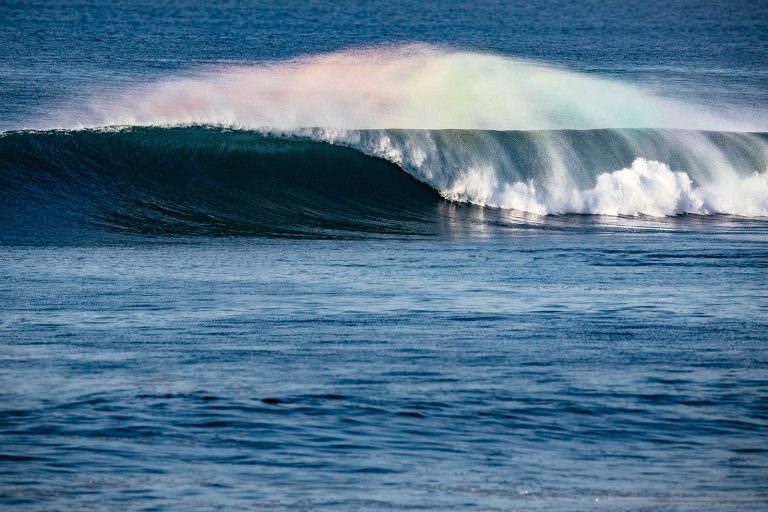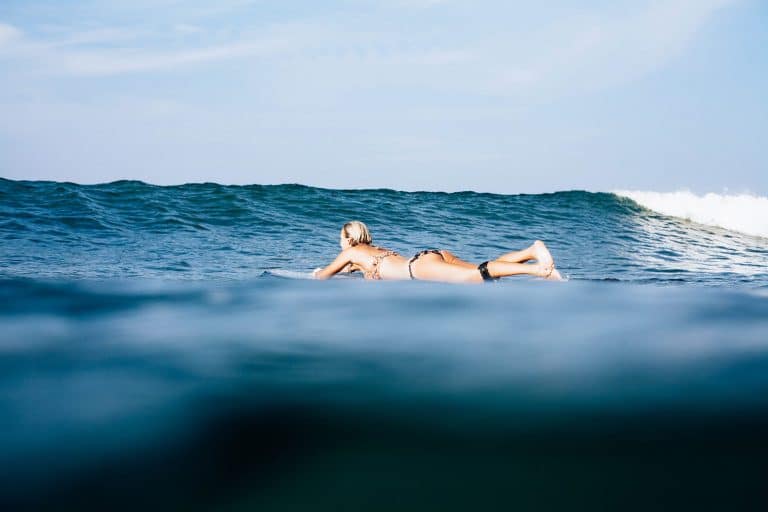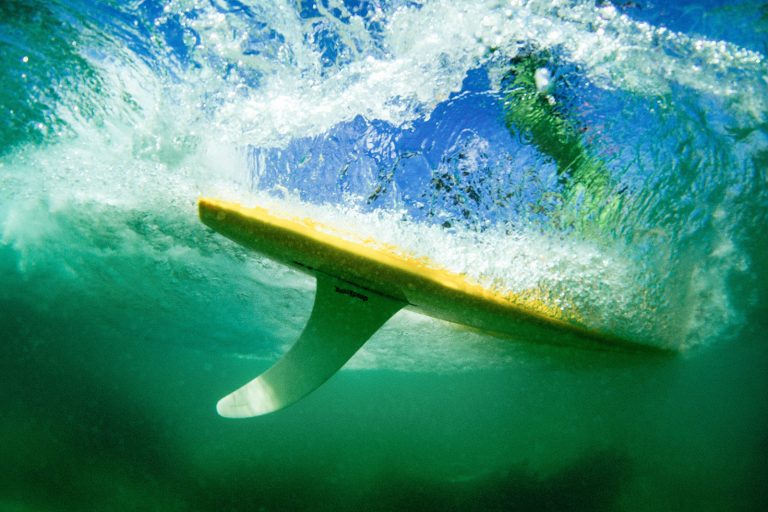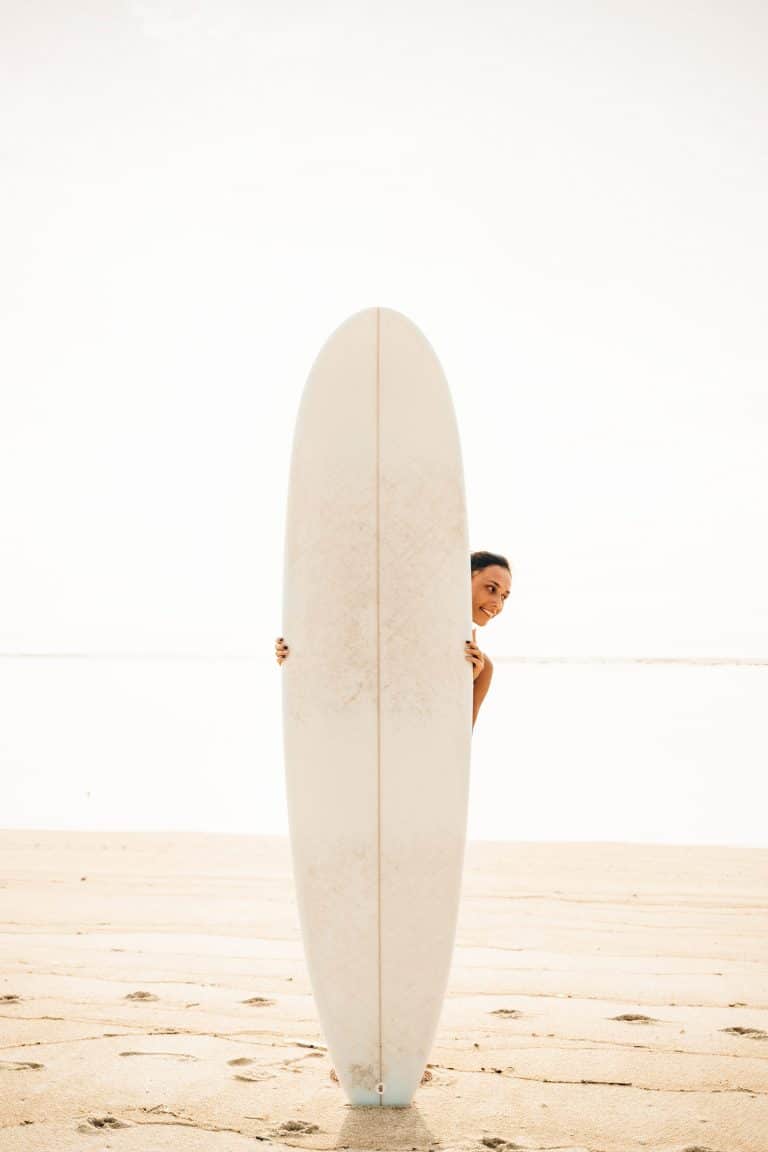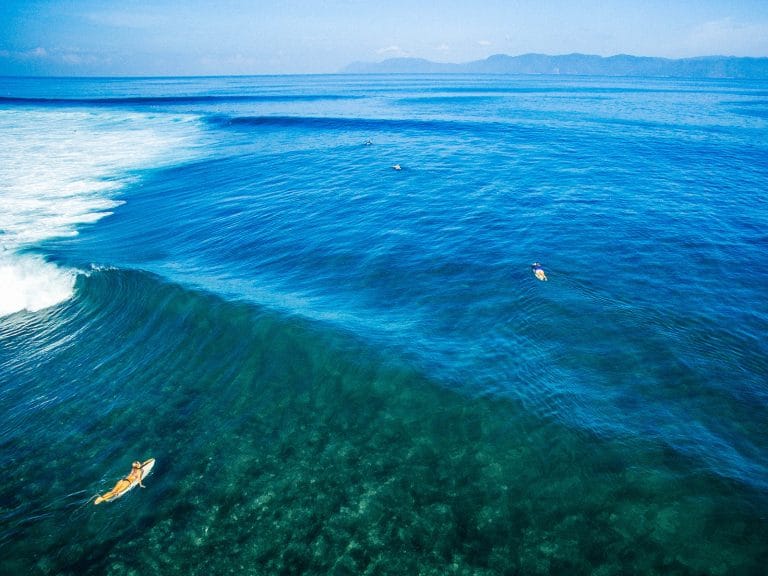All the Parts of a Surfboard, Explained Simply
If you love surfing but feel like you don’t know the first thing about it, don’t let that stop you from going after it!
Surfing is a journey that has to start somewhere, and a good place to start sooner than later is knowing the parts of a surfboard and what they do.
This will help you understand how all the different parts work, what makes a surfboard go fast (or slow), and why you might choose one board over the other.
Although there are many types and subtypes of surfboards out there—and keeping track of them all can be pretty overwhelming—the names for the individual parts are always the same for every surfboard type, making it easier to buy a surfboard that fits your style or ability level, have a conversation with a shaper if you want a custom board made, and simply remember what’s what.
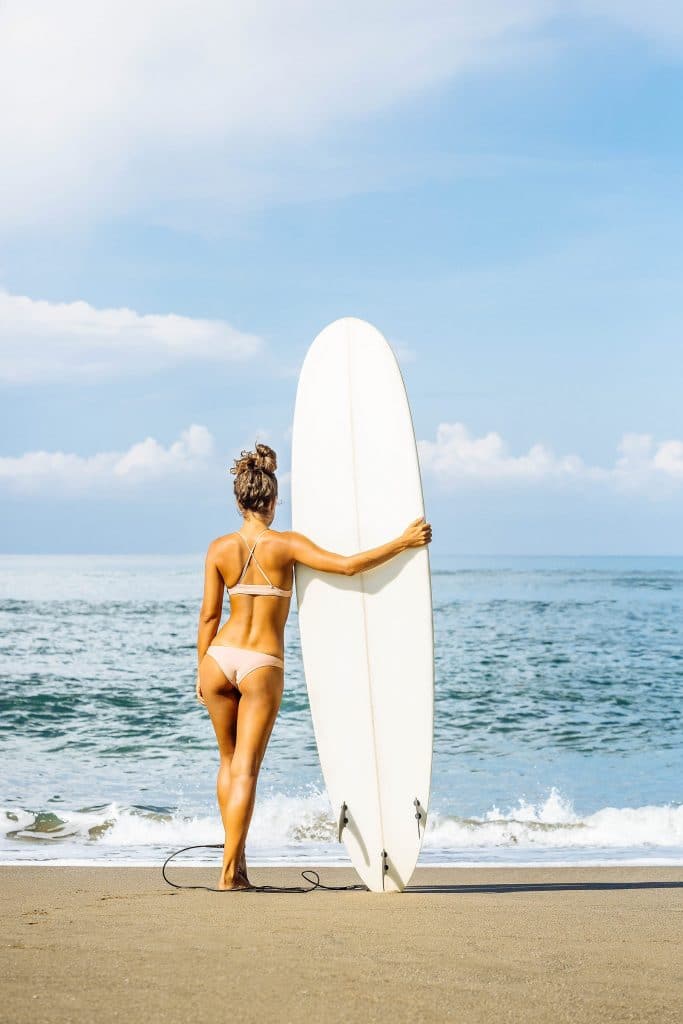
This is the guide I wish I had when I learned to surf almost 15 years ago, because when I was trying to figure out what the heck I was doing, I realized that most of the how-to advice came from guys or seasoned surfers who forgot that not everybody’s hip to all the technical jargon and surf lingo (at least, not yet).
Hopefully, this makes it a little less intimidating if you’re new to the sport and just want a clear-cut explanation from someone who’s been there and remembers how it feels!
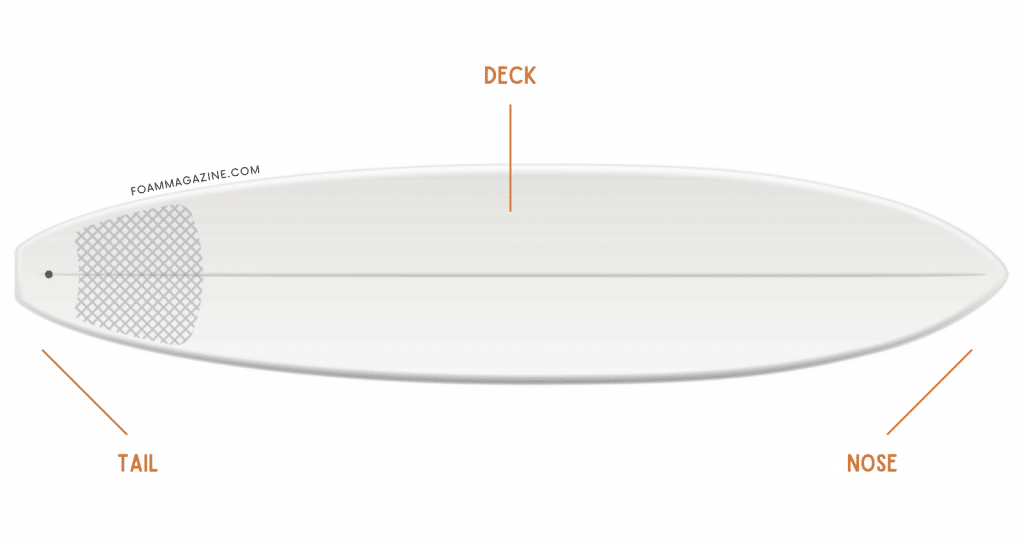
Nose
The nose is the front part of the surfboard that sits out of the water (generally the first 12 inches). Depending on the type of board, the nose can be rounded or pointed.
Longboards and their subtypes usually have rounded noses; the rounder and wider the shape of the nose, the more buoyant it is, and the higher the front of your board will be above the water while you’re paddling or standing. This shape is ideal for beginners as it increases paddling speed and helps with stability and getting onto smaller or softer waves.
Shortboards and their subtypes usually have pointed noses. Because pointed noses have less surface area in the front of the board, they’re not as buoyant or stable when paddling into waves. On the flip side, pointed noses offer better performance in terms of turning and maneuvering your board with more speed and control, and being able to catch larger or steeper waves.
Tail
On the other end you have the tail, or the back part of the surfboard (generally the last 12 inches). Different boards come with different types of tails (squash tail, square tail, pin tail, round tail, and swallow tail being the most common) and each shape can influence your board’s stability, maneuverability, speed, and control in the water.
Deck
This is the top of the surfboard where a surfer stands or lies when paddling. The surface is smooth but needs to be waxed to ensure a good grip for your feet. For extra grip and stability (especially on a shortboard), you can also install a traction pad on the tail.
There are three types of surfboard decks: dome deck, flat deck, and step deck.
A dome deck is the most common type of deck and like the name says, it gives the board a slight dome shape with more volume toward the center and thinner rails, allowing for easier turns.
A flat deck is completely flat from tip to tail and has wider rails.
A step deck looks similar to a flat deck at first glance, but actually has more volume spread evenly across the deck, making it stronger and stiffer than the other two (and great for paddling). When viewing a step deck from the side, there’s a distinct “step” up from the rails.
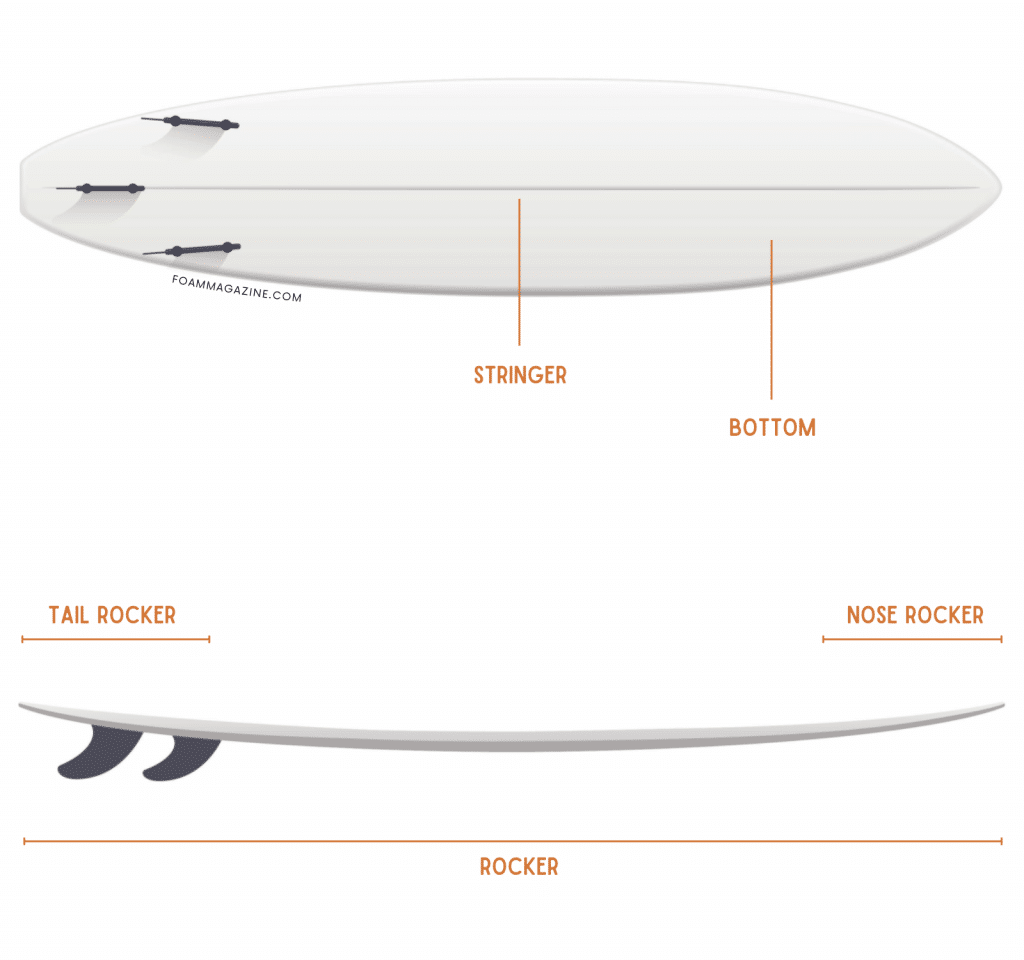
Bottom
While the top of a surfboard is called a deck, the bottom is called… the bottom. How easy is that?
Despite its unassuming name, the bottom plays an important part in a surfboard’s design because its subtle contours (known as concaves and convexes) affect water flow and displacement, which ultimately affect the speed and drag of the board.
Simply put, when a surfboard is made, concaves and convexes are the bits of foam carved out to create channels that control how the water moves under the board. If you’ve ever looked at the bottom of a boat, this is the same idea.
Rocker
Rocker represents the curvature of the surfboard when you’re viewing a board from the side. It kind of looks like a banana shape.
Some surfboards have continuous rocker, meaning the curve is smooth and uninterrupted from the nose to the tail.
Other boards have a staged rocker, meaning there’s a distinct flat section in the middle of the curve. On these types of surfboards, the rocker in the front is often called a flip, and the rocker in the back is often called a kick.
Rocker is important to understand in surfboard design because the degree of curvature can change the maneuverability, turning sensitivity, and speed of the board. More rocker in the nose helps the board from dipping into the water. More rocker in the tail helps you turn faster and build speed. A relaxed rocker is a more subtle curve that’s ideal for beginners because it offers stability.
Learn more about how different types of rocker affect a surfboard’s performance.
Stringer
The stringer is the centerline that you sometimes see running vertically down the middle of the surfboard. Made of wood or carbon fiber, it adds strength and flex to the board and often acts as a point of reference for surfers and surfboard shapers.
Learn more about different stringer materials and why there may be two or more stringers on a board.
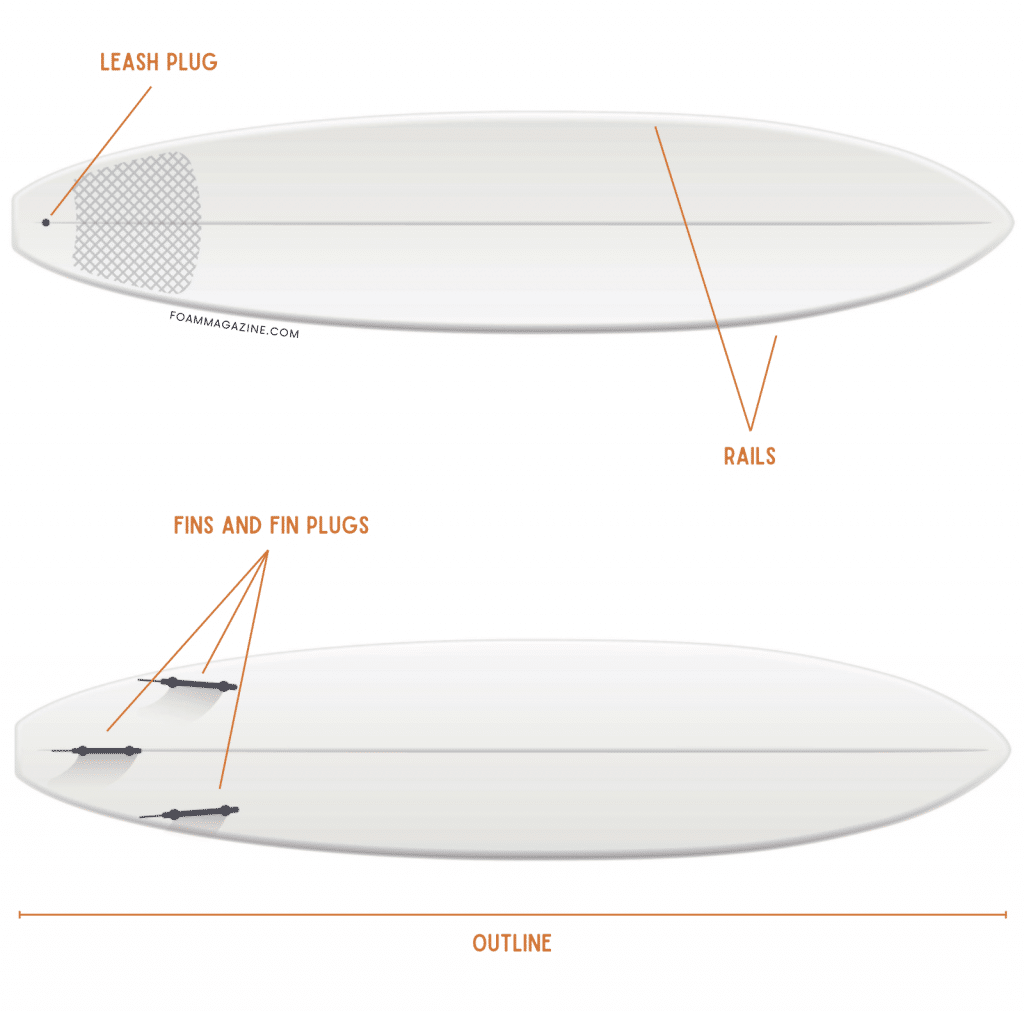
Rails
Rails are the edges of your surfboard that run the entire length from the bottom to the nose. Depending on the type of deck, rails can vary in shape and thickness, allowing for different levels of responsiveness in the water.
I go more into soft rails vs. hard rails in this simple explainer guide right here.
Leash and leash plug
The leash is the long plastic cord that keeps your ankle (or your calf, right under the knee) tethered to your surfboard so it doesn’t go floating off after you fall.
The leash plug is an attachment point in the back part of the board where your leash attaches to the board.
Here’s how to figure out what length surfboard leash you should get.
Fins and fin plugs
Fins are the rudders on the bottom of the surfboard that provide stability while you shift your weight and stance to steer the board. A surfboard may have only one fin or as many as four fins. These can be fixed or removable, and in the case of removable fins, fin plugs are the slots on the board where the fins are installed.
Here are the different types of fin setups you can try, explained.
Outline
The overall shape of a surfboard (when looking at the nose, rails, and tail together) is known as the outline. An outline can form a commonly recognized surfboard type (like a gun, longboard, funboard, shortboard, egg, or fish) or even something entirely new.


